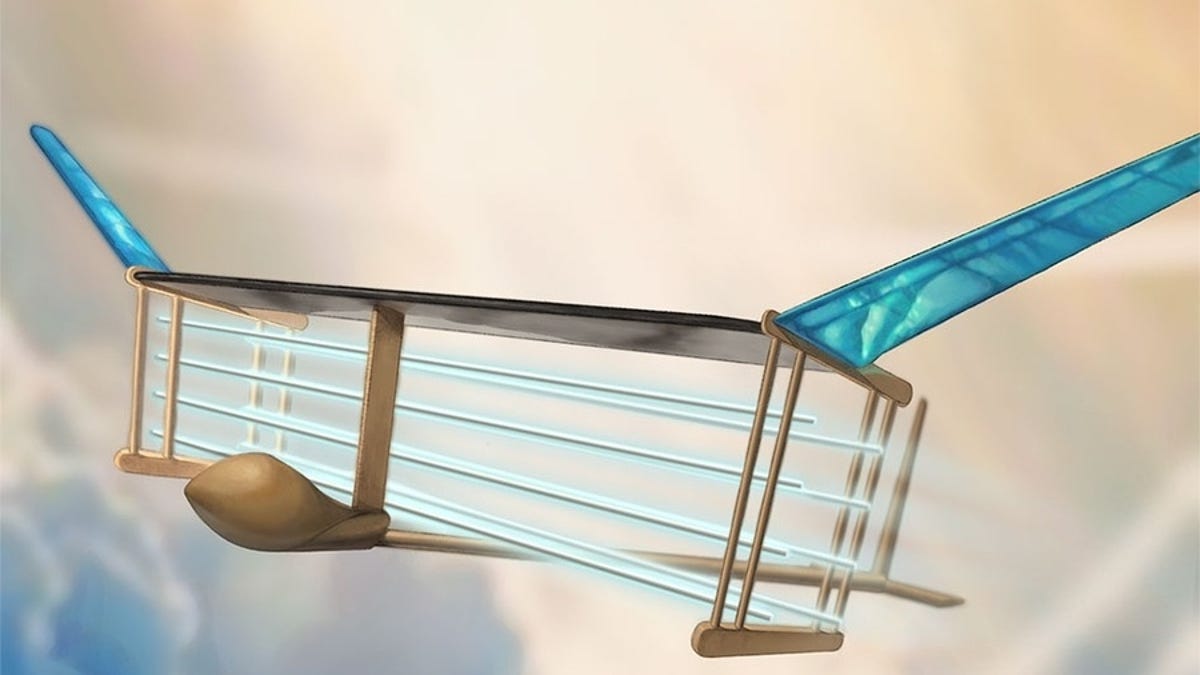NASA Invests in Solid-State, Silent Drone Flight System
The space agency has flown a helicopter on Mars. Now it's supporting an effort to bring stealthy delivery drones to urban environments on Earth, and maybe beyond.

An illustration of the solid-state, silent aircraft in flight.
NASA is investing in a new kind of airplane: one that works off a propulsion system with no moving parts.
The space agency funds research into futuristic, experimental and nascent technologies through the NASA Innovative Advanced Concepts program. The latest round of NIAC fellows, announced last month, includes MIT aerospace engineering professor Steven Barrett, who has been working for years on a silent, solid-state flying system.
Barrett and the MIT Electric Aircraft Initiative published a paper about the technology in the journal Nature in 2018. Rather than rotors or propellers, they developed a small aircraft with a series of electrodes beneath the wings creating a high-voltage electric field that ionizes and then accelerates nitrogen molecules in the atmosphere to propel the plane forward. You can see it in action, with a more detailed explanation from Barrett, in the video below.
"It's still some way away from an aircraft that could perform a useful mission," Barrett said in a statement at the time. "It needs to be more efficient, fly for longer, and fly outside."
The so-called electro-aerodynamic propulsion system is limited in terms of the altitude and size of aircraft it can support, leading Barrett to believe that it may be best used for small, electric, vertical takeoff and landing, or VTOL, aircraft operations in urban areas.
"The aircraft would enable package delivery missions in noise-sensitive areas or at night, where operations would otherwise not be allowed due to community opposition," reads Barrett's NIAC project summary.
Imagine a drone that glides up to your doorstep with ninja-like stealth to drop off a package rather than the irritating whir of drone rotors.
So why is NASA interested in silent, urban delivery drone tech? Well, the space agency also works in aeronautics here on Earth, but it may have its eyes on more distant destinations after flying its own tiny helicopter on Mars. Solid state technology without moving parts is always an attractive perk for space missions, where repairing worn-out components is often impossible.
And as it turns out, Barrett himself was inspired by spacey science fiction.
"In the long-term future, planes shouldn't have propellers and turbines," he said in 2018. "They should be more like the shuttles in Star Trek, that have just a blue glow and silently glide."
Barrett's team will receive $175,000 in phase one NIAC funds to develop the technology over a nine-month period.

